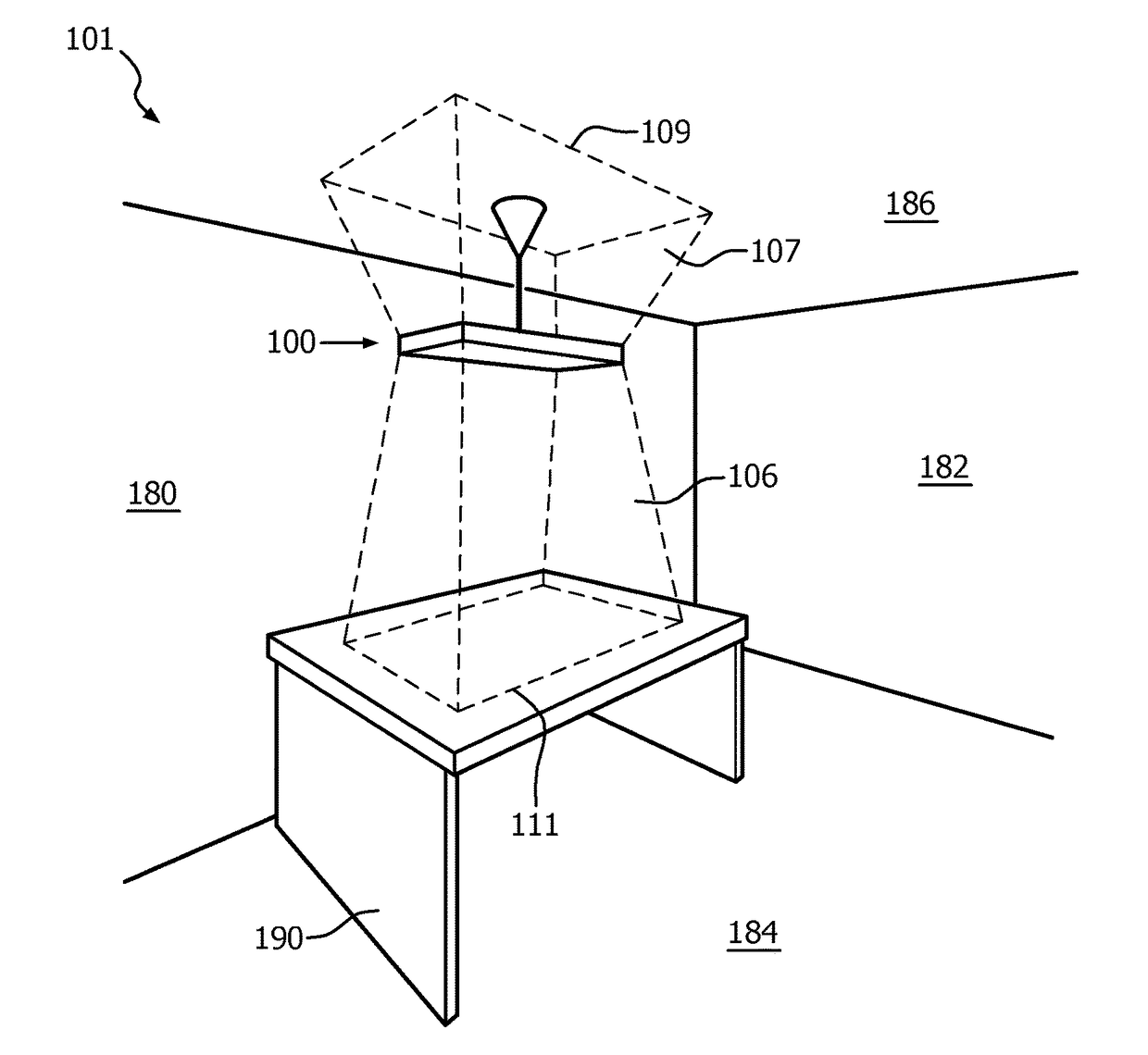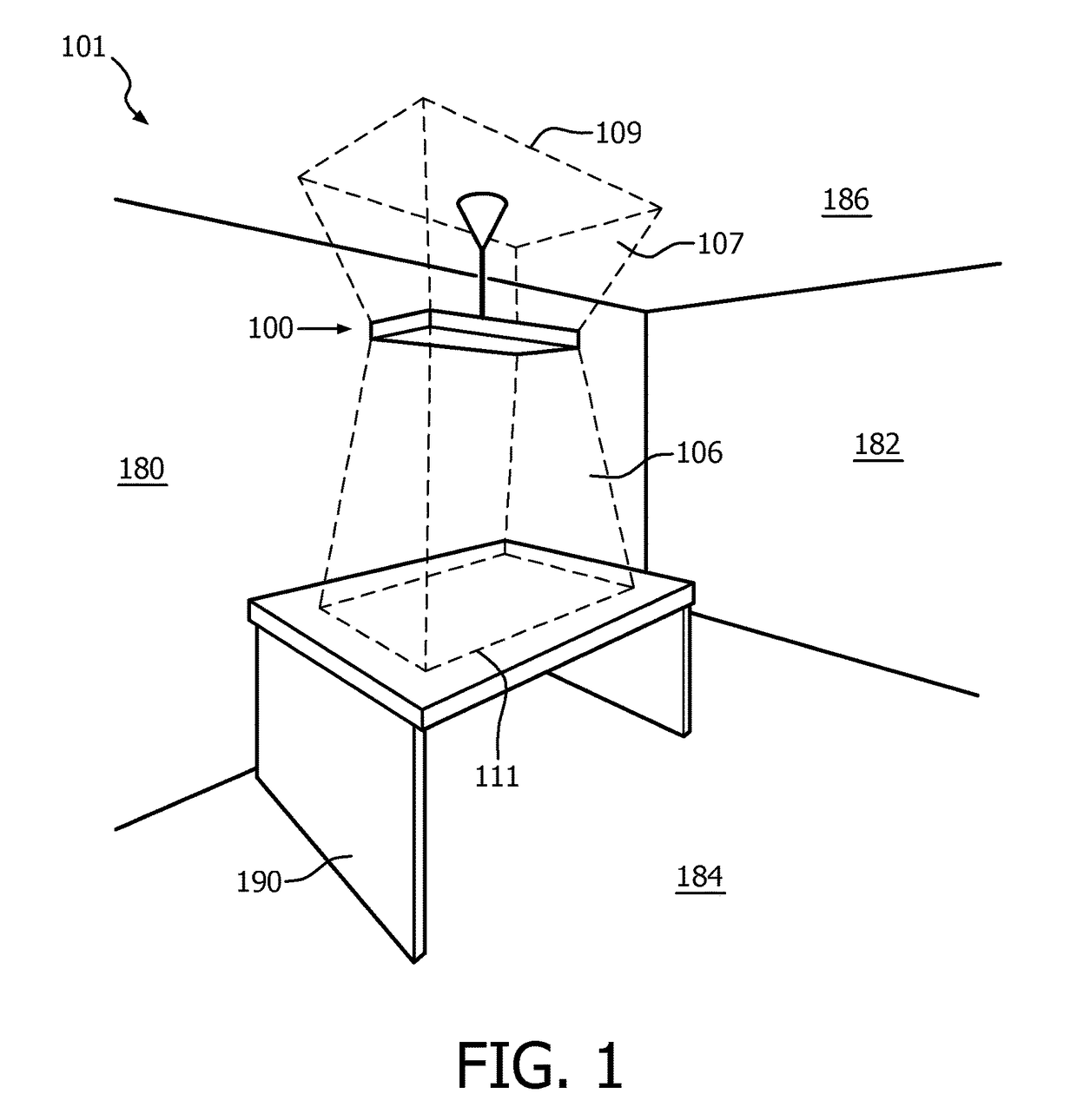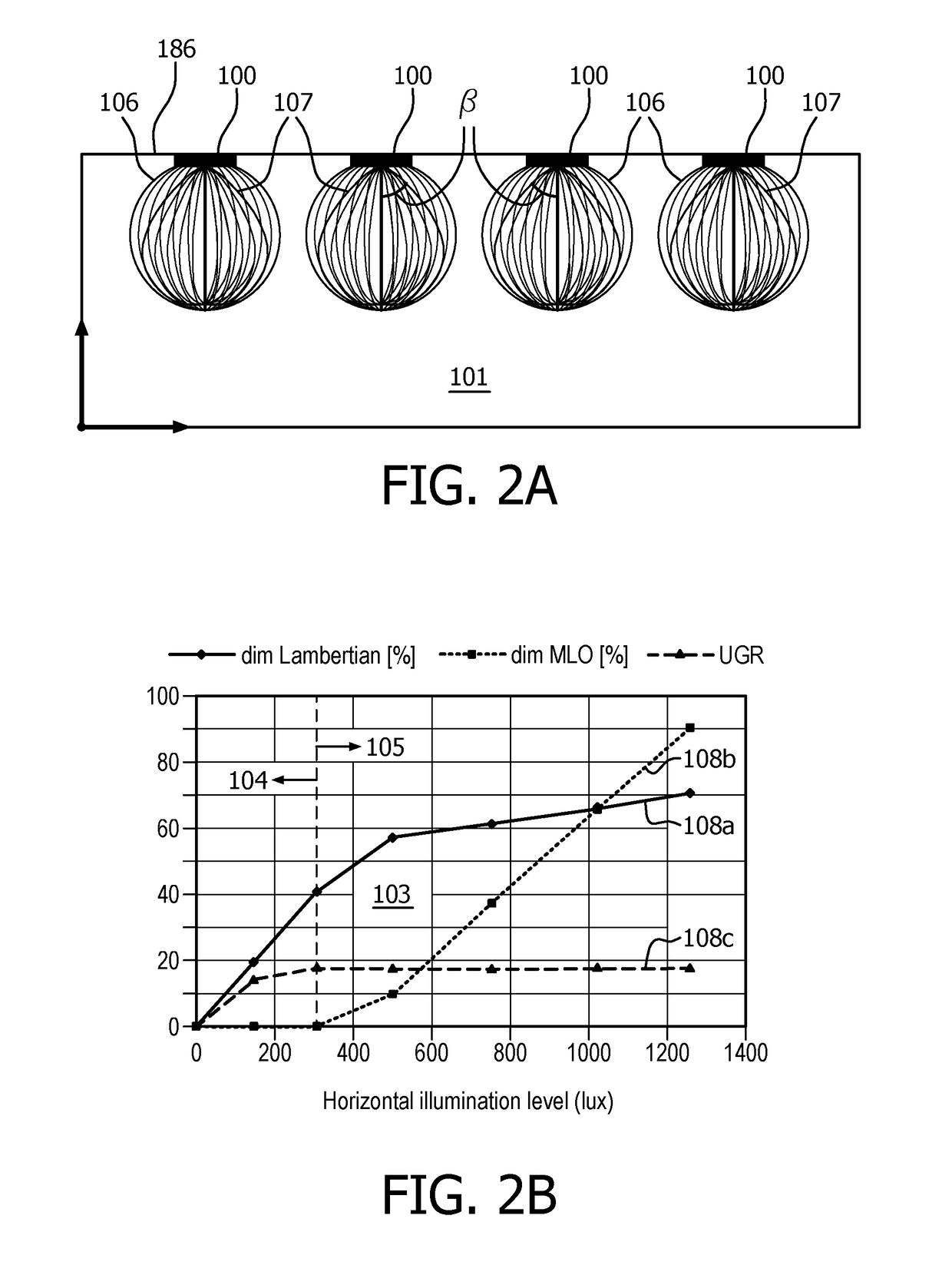Lighting device and lighting system
a technology which is applied in the field of lighting device and lighting system, can solve problems such as the effect of reducing the ratio
- Summary
- Abstract
- Description
- Claims
- Application Information
AI Technical Summary
Benefits of technology
Problems solved by technology
Method used
Image
Examples
Embodiment Construction
[0058]FIG. 1 shows a room 101 provided with a lighting device 100 according to a first embodiment of the invention. The room 101 comprises sidewalls 180, 182, floor 184 and ceiling 186. Furniture including for instance table 190 is arranged at certain predetermined locations on the floor. The lighting device comprises at least one first light source issuing a first, direct beam 106 in a first direction and at least one second light source issuing a second, indirect beam 107 in a second direction. Said first and second light source are dimmable and together issue light with a total light flux. At a mutually equal light flux of the first and the second beam, the glare level of the second beam is lower than the glare level of the first beam. The lighting device 100 according to the present invention comprises a preprogrammed controller (not shown) for controlling the lighting device. Said controller adjusts the light output of the respective light sources such that in a first illuminat...
PUM
 Login to View More
Login to View More Abstract
Description
Claims
Application Information
 Login to View More
Login to View More - R&D
- Intellectual Property
- Life Sciences
- Materials
- Tech Scout
- Unparalleled Data Quality
- Higher Quality Content
- 60% Fewer Hallucinations
Browse by: Latest US Patents, China's latest patents, Technical Efficacy Thesaurus, Application Domain, Technology Topic, Popular Technical Reports.
© 2025 PatSnap. All rights reserved.Legal|Privacy policy|Modern Slavery Act Transparency Statement|Sitemap|About US| Contact US: help@patsnap.com



